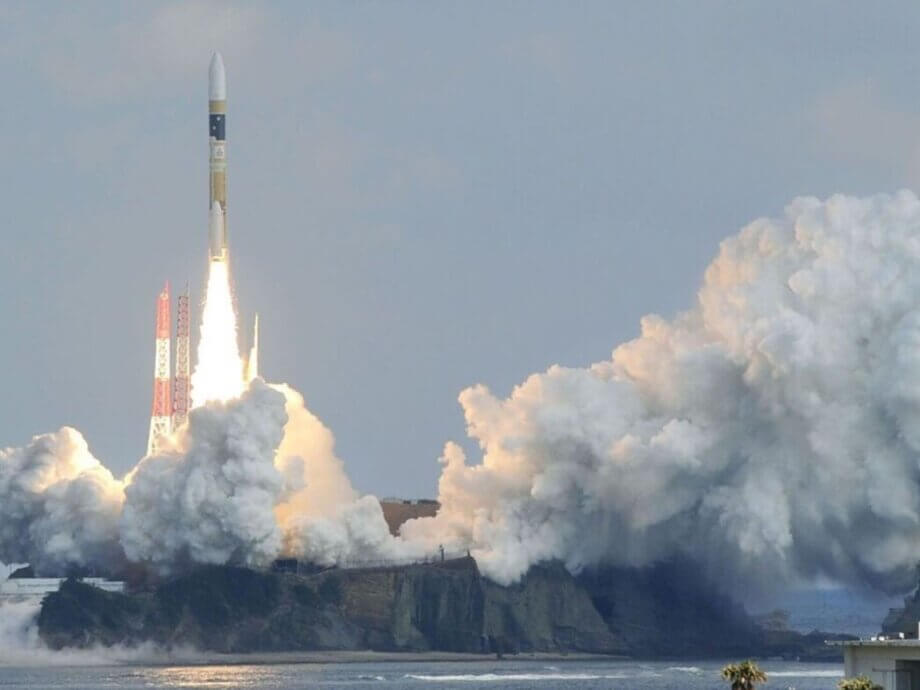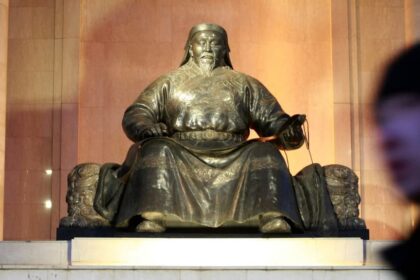Japan’s H2A Rocket: A Triumphant Final Launch and the End of a Spacefaring Era
In the early hours of June 29, 2025, Japan’s H2A rocket soared into the night sky from the Tanegashima Space Center in Kagoshima Prefecture, marking the 50th and final mission of a launch vehicle that has defined the nation’s space ambitions for nearly a quarter of a century. The successful deployment of the GOSAT-GW satellite, designed to monitor greenhouse gases and the global water cycle, not only capped a remarkable 24-year career for the H2A but also signaled a pivotal transition for Japan’s space program as it shifts to the next-generation H3 rocket.
- Japan’s H2A Rocket: A Triumphant Final Launch and the End of a Spacefaring Era
- What Made the H2A Rocket Special?
- The Final Mission: GOSAT-GW and the Fight Against Climate Change
- Challenges and Achievements: The H2A’s Journey
- The Transition to H3: A New Era for Japan’s Space Program
- Public Reaction and the Future of Japanese Spaceflight
- In Summary
Celebrating a Legacy of Reliability and Innovation
The H2A rocket, developed by Mitsubishi Heavy Industries (MHI) in partnership with the Japan Aerospace Exploration Agency (JAXA), has been the backbone of Japan’s space access since its debut in 2001. Over 24 years, the H2A achieved a near-perfect record, with 49 successful launches out of 50—a 98% success rate that places it among the world’s most reliable launch vehicles. The only blemish came in 2003, when a booster separation failure led to the destruction of the sixth rocket. Subsequent design improvements ensured a flawless run for the remaining missions.
Keiji Suzuki, the MHI official in charge of the final launch, expressed the emotional weight of the moment:
“I was more nervous than ever about the launch and feel like I’m still dreaming. We achieved our long-cherished goal of a 98 percent success rate.”
At the Tanegashima Space Center, more than 1,300 spectators gathered to witness the historic event, their cheers echoing as the rocket’s engines lit up the pre-dawn sky. For many, the H2A’s retirement is both a celebration of achievement and a poignant farewell to a symbol of Japanese technological prowess.
What Made the H2A Rocket Special?
The H2A was a two-stage, liquid-fueled rocket, often augmented with solid-fuel boosters for heavier payloads. It was designed to be versatile, capable of launching satellites into a variety of orbits—including geostationary, sun-synchronous, and even lunar trajectories. This flexibility allowed Japan to support a wide range of missions, from weather forecasting and navigation to deep space exploration.
Among its most notable payloads were:
- Himawari Meteorological Satellites: Essential for weather forecasting across the Asia-Pacific region.
- Michibiki Quasi-Zenith Satellites: Enhanced GPS accuracy for Japan and neighboring countries.
- Hayabusa2 Asteroid Mission: Successfully returned samples from asteroid Ryugu, advancing planetary science.
- SLIM Lunar Lander: Made Japan the fifth nation to achieve a soft landing on the Moon.
These missions not only advanced scientific knowledge but also contributed to disaster management, navigation, and international collaboration.
The Final Mission: GOSAT-GW and the Fight Against Climate Change
The last H2A launch carried the GOSAT-GW (Global Observing Satellite for Greenhouse Gases and Water Cycle), also known as Ibuki GW. This advanced satellite is equipped with two main instruments: the Advanced Microwave Radiometer (AMSR) for monitoring water cycles and sea surface temperatures, and the Greenhouse Gases Observation Sensor (TANSO) for tracking atmospheric carbon dioxide, methane, and other greenhouse gases.
GOSAT-GW’s mission is critical in the context of global climate change. By providing high-resolution, near-real-time data on greenhouse gas concentrations and water cycle dynamics, the satellite will support international efforts to monitor and mitigate climate change. Within a year, its data will be made available to users worldwide, including agencies like the U.S. National Oceanic and Atmospheric Administration (NOAA).
Takashi Hamazaki, GOSAT project manager at JAXA, emphasized the satellite’s importance:
“GOSAT-GW will play an important role in understanding global warming.”
The satellite’s ability to observe a swath of approximately 900 kilometers at a time enables comprehensive, seamless surveys of the entire planet, making it a vital tool for scientists and policymakers alike.
Challenges and Achievements: The H2A’s Journey
The H2A’s path was not without obstacles. Its sixth launch in 2003 ended in failure due to a damaged jet nozzle and a booster separation issue, prompting a year-long investigation and redesign. The program rebounded, and the rocket went on to achieve 44 consecutive successful launches—a testament to the engineering rigor and commitment of Japan’s space community.
Despite its technical excellence, the H2A struggled to compete in the commercial satellite launch market. Its high launch cost—estimated at around 10 billion yen (roughly $90 million USD) per flight—limited its appeal to international customers, especially as competitors like SpaceX’s Falcon 9 drove prices down. As a result, the H2A was used primarily for government, scientific, and national security missions, with only a handful of commercial launches for clients such as Inmarsat and Telesat.
Scientific and Strategic Contributions
Beyond its commercial challenges, the H2A played a crucial role in advancing Japan’s scientific and strategic interests. It launched reconnaissance satellites for national security, supported international space station resupply missions (via the H2B variant and HTV cargo vehicles), and enabled groundbreaking planetary science missions. The Hayabusa2 mission, in particular, captured global attention by returning asteroid samples to Earth, offering insights into the origins of the solar system.
The rocket’s reliability also bolstered Japan’s reputation as a spacefaring nation, fostering partnerships with agencies and organizations worldwide.
The Transition to H3: A New Era for Japan’s Space Program
With the retirement of the H2A, Japan is turning to the H3 rocket—a next-generation launch vehicle jointly developed by JAXA and Mitsubishi Heavy Industries. The H3 is designed to address the limitations of its predecessor by offering:
- Lower Launch Costs: Targeting roughly half the cost of the H2A, making it more competitive globally.
- Higher Payload Capacity: Capable of carrying larger and heavier satellites.
- Flexible Configurations: Multiple variants to suit diverse mission requirements.
The H3’s development has not been without setbacks. Its maiden flight in March 2023 ended in failure when the second-stage engine failed to ignite, resulting in the loss of the rocket and its payload. However, subsequent launches have been successful, and the H3 is now poised to become Japan’s mainstay launch vehicle.
Hiroshi Yamakawa, president of JAXA, reflected on the transition:
“It is a deeply emotional moment for all of us at JAXA as a developer.”
The H3’s success is seen as vital for Japan’s ambitions to secure a stable, commercially competitive space transport capability—an increasingly important factor in both national security and the global satellite launch market.
Japan’s Broader Space Strategy
Japan’s space program is evolving to meet new challenges and opportunities. In addition to the H3, the country is developing the smaller Epsilon rocket for launching compact satellites, aiming to cater to a wider range of customers. The government views a robust, independent launch capability as essential for technological sovereignty, economic growth, and international collaboration.
With the global space economy expanding rapidly, Japan hopes to carve out a larger share of the commercial launch market while continuing to support scientific discovery and national security.
Public Reaction and the Future of Japanese Spaceflight
The final H2A launch was met with a mix of nostalgia and excitement for the future. For engineers, scientists, and the public, the rocket’s retirement marks the end of an era defined by technical achievement and national pride. At the same time, the successful transition to the H3 rocket is seen as a necessary step to ensure Japan remains at the forefront of space exploration and technology.
As the GOSAT-GW satellite begins its mission, the data it provides will inform climate policy and scientific research for years to come. Meanwhile, the H3 rocket’s continued development and operational success will determine Japan’s competitiveness in a rapidly changing space industry.
In Summary
- Japan’s H2A rocket completed its 50th and final launch on June 29, 2025, successfully deploying the GOSAT-GW climate monitoring satellite.
- The H2A retires with a 98% success rate, having supported Japan’s space program for 24 years and launched numerous scientific, commercial, and security payloads.
- The final mission’s GOSAT-GW satellite will play a key role in global climate change monitoring and research.
- High launch costs limited the H2A’s commercial competitiveness, prompting the development of the more cost-effective H3 rocket.
- The H3 rocket, now Japan’s flagship launch vehicle, aims to offer lower costs, higher payload capacity, and greater flexibility to compete in the global market.
- Japan’s space program is entering a new era, balancing scientific discovery, national security, and commercial opportunity as it builds on the H2A’s legacy.












